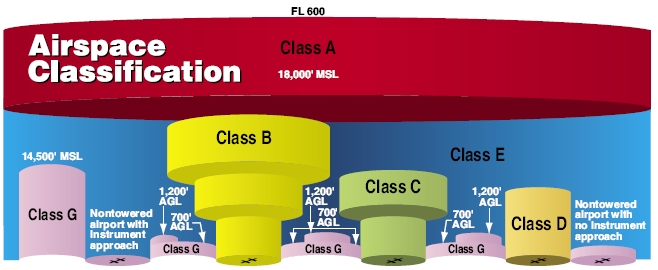Airspace and Restrictions
Before flying a drone, it is important to understand that you are sharing the airspace with a variety of other aircraft. Airspace in the United States is designed to ensure a safe operating environment for everyone. Being able to identify airspace and any restrictions is important for everyone’s safety.

Regulated airspace begins at ground level in the United States. Even if you are a long way from a large airport, you may be closer than you realize to seaplane bases, smaller airports, heliports, or agricultural aircraft operations.
Airspace is divided into two main categories: controlled and uncontrolled. Controlled airspace includes areas around most airports. It is designed to protect aircraft arriving at or departing from an airport. The size and shape of the controlled airspace varies depending on airport needs.
Uncontrolled airspace includes most of the airspace starting at ground level and away from airports. Uncontrolled does not mean unregulated. Flying in uncontrolled airspace still requires that you comply with all the rules under the Exception for Recreational Flyers.
Unless specifically authorized by the FAA, recreational drone flying is limited to no more than 400ft above ground level in uncontrolled airspace, and is limited to UAS Facility Map (UASFM) altitudes in controlled airspace.
Airspace may also be restricted at certain times, prohibiting any drone flying. These restrictions can happen in both controlled and uncontrolled airspace. Airspace restrictions can be temporary or permanent, dependent upon security or safety needs.



